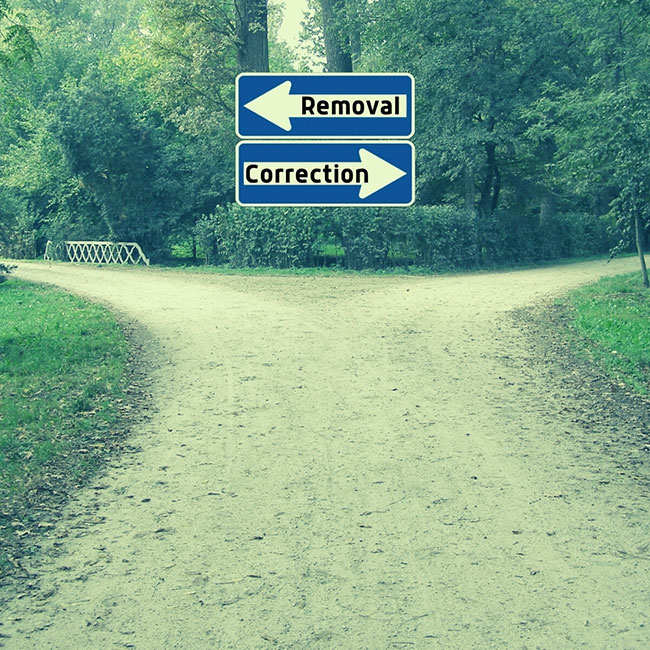I ask myself this question during every consultation for someone who has been botched. “Can I simply color correct a bad permanent makeup procedure & enhance the shape or is it over saturated & requires saline removal and lightening first?” Why do I ask this question? Simple, because every time we touch that skin with a needle tattooing we are creating some level of scar tissue. The more scar tissue created the potential for less retention, nothing tattoo’s quite as well as virgin skin.
We need to weigh the risk to reward every time we do a correction. I do a thorough consultation & investigation to determine the best course of action. I look at the area, I find out how many times that area has been tattooed (how many layers of color are there), what technique was done (specifically brows; were they microbladed, powder/shaded, or combination of both) & when was the last time it was worked on. It is also helpful to know what pigment was used, was it an organic color, inorganic color, or a hybrid of both due to the molecule size differences of organic vs inorganic colors. I know if it is an organic carbon based pigment the molecules with be smaller than an iron oxide inorganic pigment. I also take a light to the skin of that tattooed area to see roughly how many pigment particles are still present in the skin. If I shine the light & it looks solid I know there is quite a bit of ink still in that skin (even if visually it doesn’t look heavily saturated the colorants could of faded leaving behind the pigment particle that will affect how new color takes.) If I shine the light and I see very little pigment particles present & visually it doesn’t appear over saturated as long as the present shape is workable I proceed with color correction. (Brows I always color correct via powder/shading, never with hairstrokes because that undesired color with pop through in between each stroke.)
There is no need to remove/lighten & cause additional scar tissue if the shape is workable and the area isn’t over saturated. If the shape is very off and not something I can correct without some level of removal (2 tails present for brows, very asymmetric, brows too close together/too long/too thick, pigment implanted in undesired areas ect.) then regardless of the area being over saturated or not removal/lightening must be performed. If the shape is workable however there is just too much pigment present in the skin, AKA over saturated or heavily saturated then full removal is not my goal, however lightening is. I need to pull some of that pigment out to make room for the new pigment.
If you try to tattoo & color correct an area that is already packed full of pigment the client will leave looking just fine, but once that tattoo heals that new color will not stick. Therefore you just created more trauma & scar tissue to that skin for no reason. Think of it like a glass of water, only so much can fit in that glass before it spills over. We must dump some of that water out to make room for the new water. Same with tattooing/PMU, we must pull some of that old pigment out to make room for the new pigment. Depending on how saturated the brow is and how well the clients skin responds to Li-FT treatments will dictate how many sessions of Li-Ft I perform.
We take it a session at a time. Roughly 30% comes out each session, sessions are 8 weeks apart. Performing Li-Ft vs laser to lighten or remove pigment will result in less scar tissue therefore getting better retention once it is time to re-tattoo the area. I let all correction clients know that results vary and corrections are a process to give them realistic expectations.
Elsa Torresiani, CPCP

